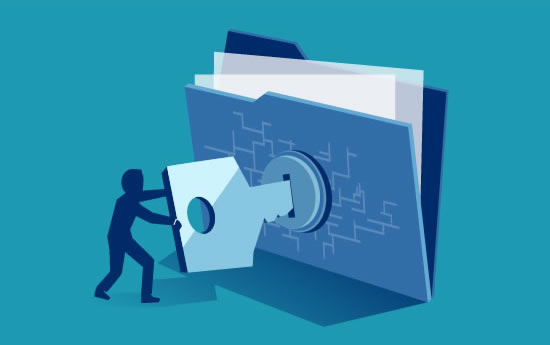Generic Systems Australia
File Encryption
A PRIMER ON FILE ENCRYPTION
There’s no doubt that encrypting sensitive files at rest and in motion is essential to guard against cyberthreats and for compliance with local, national, or industry-standard requirements. Discover the basics of file encryption, how it works, and how to choose the best way to encrypt your files.
What Is File Encryption?
Encryption is a method of encoding information so that it’s unusable until decrypted – giving only authorized parties the keys to read or access that data. Encrypting files helps to prevent unauthorized access or tampering while data is in transit or at rest, depending on the method used.
Original methods of encryption included simply shifting letters through the alphabet or substituting letters and symbols, such as the Caesar Cipher or the Enigma machine. Today, file encryption is more sophisticated, more secure, and more difficult to crack, allowing encrypted document sharing and transfer to be a viable and secure option for organizations and individuals alike.
Essential File Encryption Terms
Algorithm: Also known as ciphers, algorithms are the rules or instructions for the encryption process. Triple DES, RSA, and AES are examples of encryption algorithms, or ciphers.
Decryption: The process of converting the unreadable cipher text that has been encrypted back to the original, readable information.
Key: A unique, randomized string of bits used to encrypt and/or decrypt data. Common key lengths are 128 and 256 bits for private keys and 2048 bits for public keys.
More file encryption terms
Encrypting Files FAQ

Securing communications has been essential since writing was invented – even ancient Egyptians used symbol replacement to keep texts private. As technology progressed, encryption moved from simple codes, to specialized tools that would encrypt messages, to encryption software. And as computers became more powerful, encryption had to use increasingly long keys to avoid brute-force attacks.
How Does File Encryption Work?
Files are encrypted using complex algorithms that shuffle the contents and then are decrypted using a key provided by the originator of the message. The effectiveness of encryption technology is determined by:
- The strength and complexity of the algorithm
- The length of the key
- The appropriateness of the chosen encryption system
Information that has been encrypted remains confidential because it is rendered unreadable to anyone without the decryption key. Some encryption algorithms offer further file protection by ensuring that files are not altered or tampered with during transit.
How Are Files Encrypted?
There are a variety of encryption standards for encrypted document sharing. Some are used most frequently by specific industries, and others are most compatible with specific databases. Popular encryption standards include:
- AS2, AS3, or AS4
- Open PGP
- ZIP with AES
- SFTP (SSH File Transfer Protocol)
- FTPS (File Transfer Protocol over SSL)
- PeSIT
- HTTPS
Most encryption technologies filter data through a series of changes – substitutions, permutations, and other operations – multiple times to conceal the message.
Symmetric vs. Asymmetric Keys
Keys that can be used by both the sender and receiver to encrypt and decrypt messages are symmetric, since the key is the same on both sides. Asymmetric encryption uses two keys, usually one public and one private. Knowing the public key allows you to encrypt the file, while the recipient uses their private key to decrypt the message.
What Does File Encryption Do?
Each encryption standard protects the privacy and integrity of your organization’s data slightly differently. For instance:
- Open PGP encryption is used for encrypting, decrypting, and authenticating files. It uses hashing, data compression, symmetric private-key cryptography, and asymmetric public-key cryptography to keep data secure. PGP encryption, done via software applications, transforms plain, readable text into a complex code of characters that are unreadable.
- GPG (GnuPG), a different implementation of the Open PGP standard, opens and decrypts files encrypted by PGP or Open PGP.
- SFTP uses encryption algorithms to securely move data to your server, keeping files unreadable during the process. SFTP also requires authentication to prevent unauthorized file access during the operation.
All-in-all, file encryption encodes your data either in motion or at rest, or both, and requires a key to decrypt the data. This keeps the content of your files secure.
Which Files Can Be Encrypted?
Nearly all file types can be encrypted, including text files, emails, data files, directories, and disk partitions. Encryption software can also be deployed on a variety of platforms, both cloud-based and on-premises, including Windows, VMware, Linux, Azure, IBM i, AIX and UNIX, and Mac OS.
How to Choose File Encryption Software
When choosing which encryption standard to implement, consider the following:
- How sensitive is the data being exchanged?
- How will the data be transported (for example, FTP, email, HTTP)?
- Are large files being exchanged (which should be compressed)?
- Should the process of encrypted file sharing and transfer mean the files be encrypted (before transmission) or should the connection be encrypted?
- What encryption standards does your trading partner support?
The best encryption software for you hinges on you and your trading partners’ requirements. Some trading partners may dictate the encryption standards due to their industry or other requirement. There are a variety of scenarios that influence what type of protection is best for your organization: simple password protection, exchanging data, authentication, sending sensitive information, getting a receipt of delivery, and more.
Encrypt Your Files Today
No matter what you need when it comes to encryption, securing your file sharing is easier with GoAnywhere